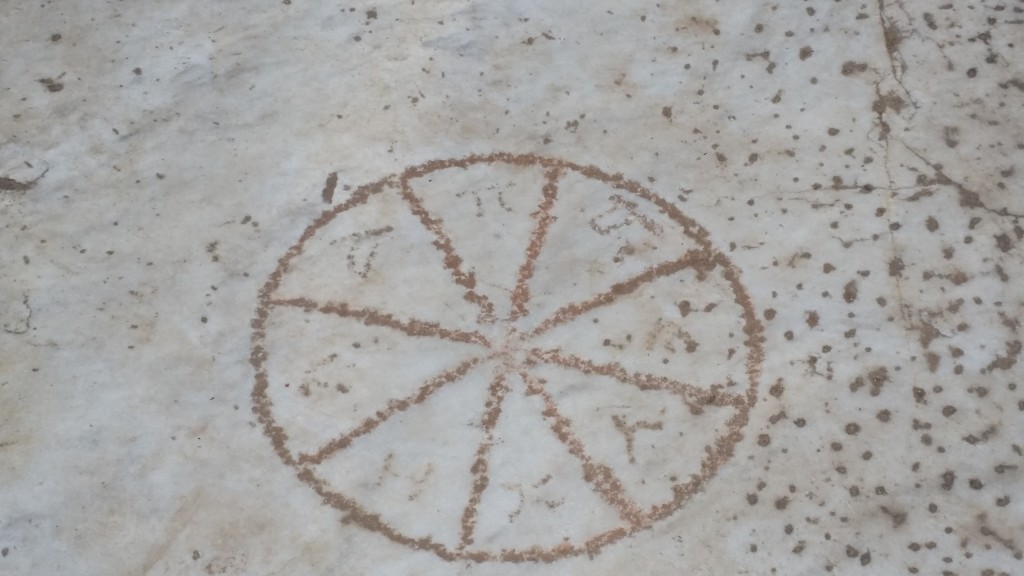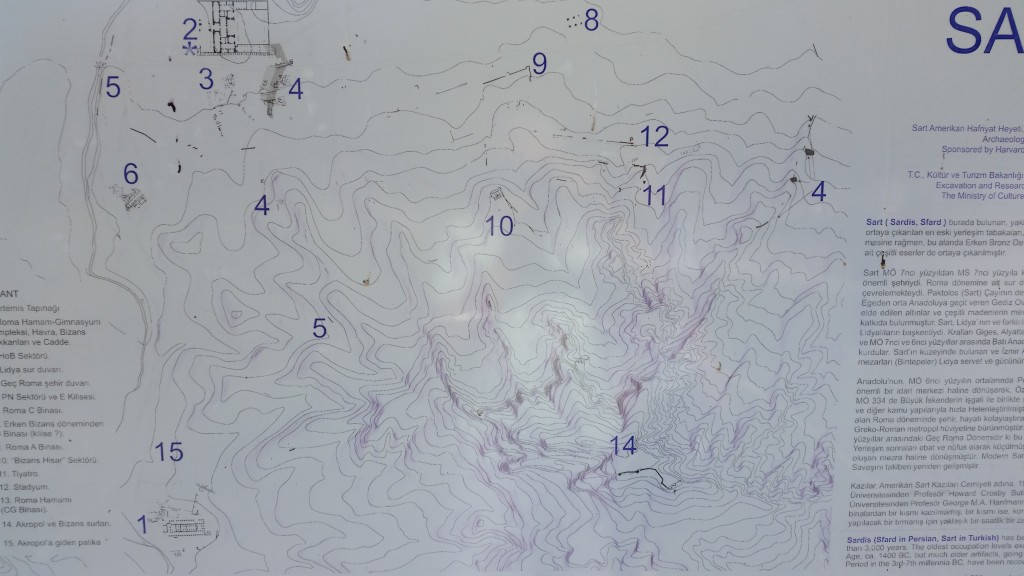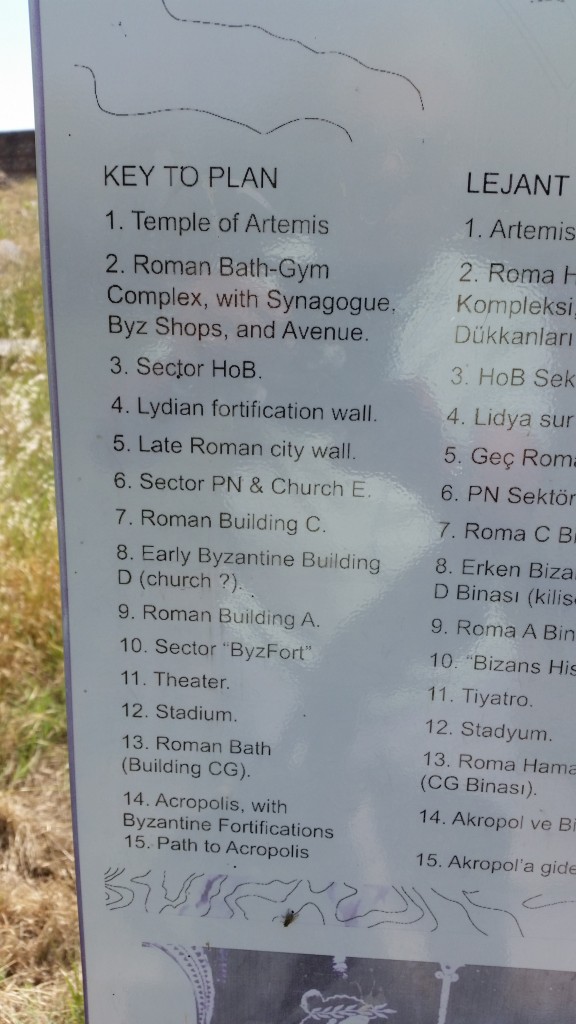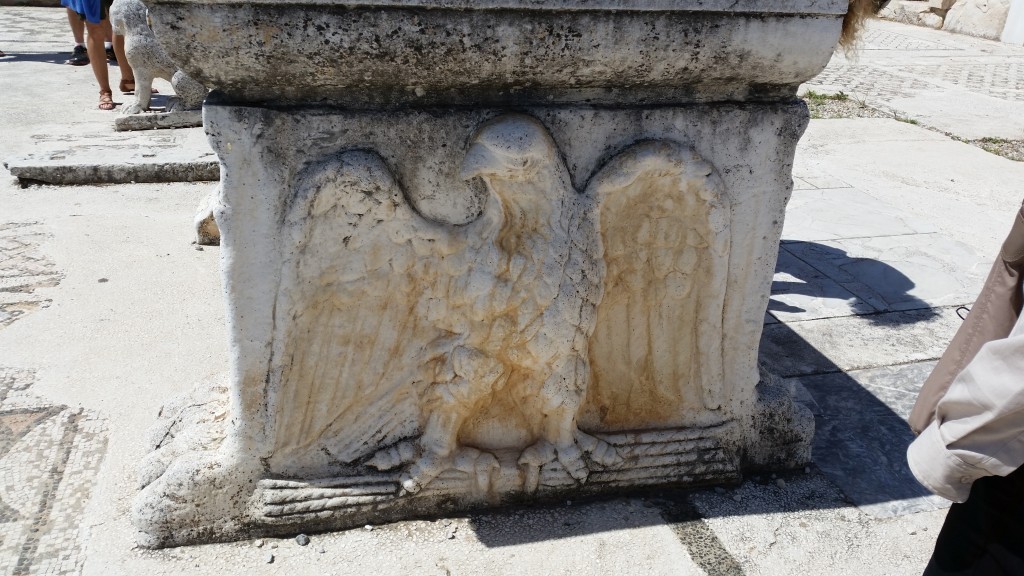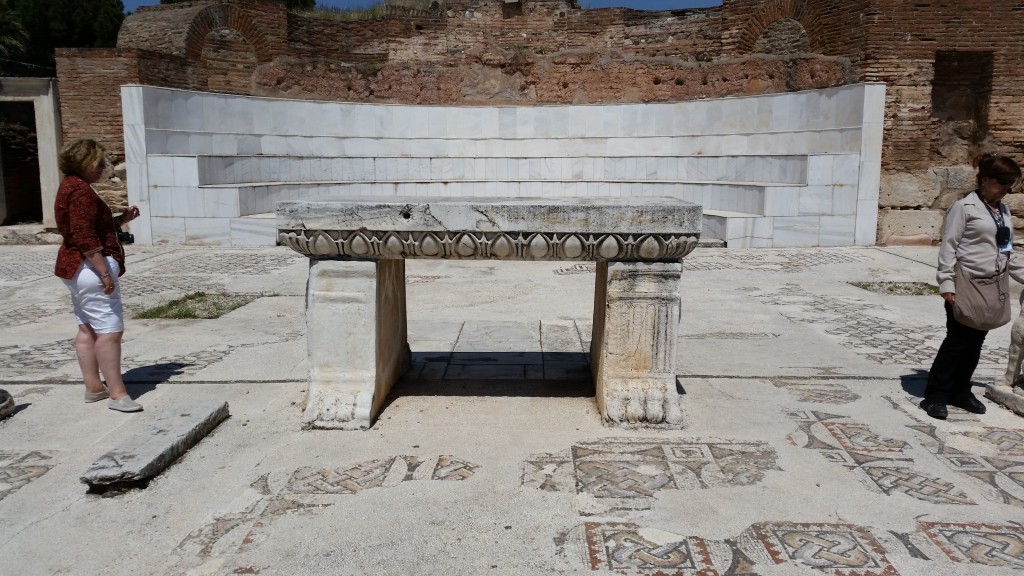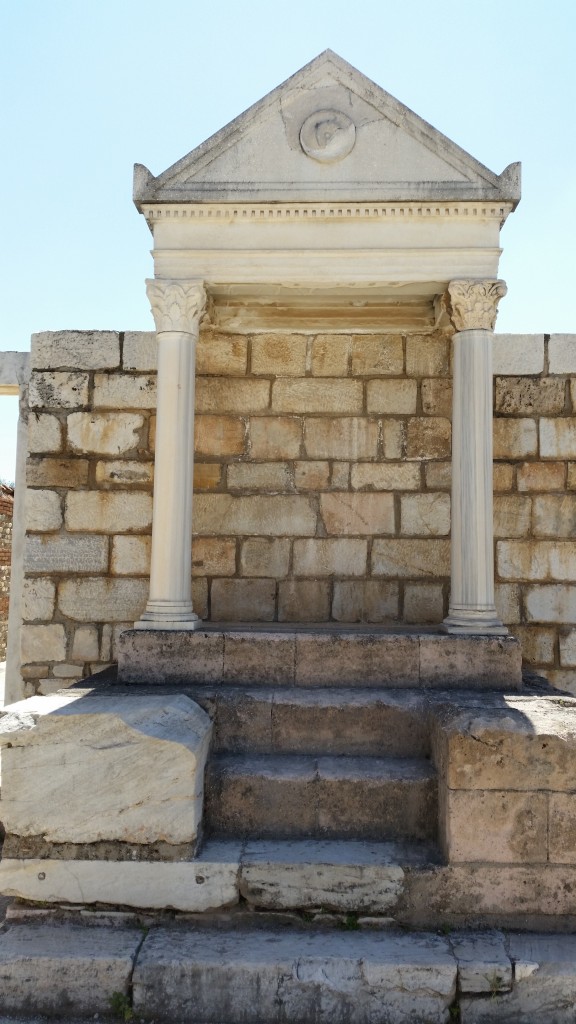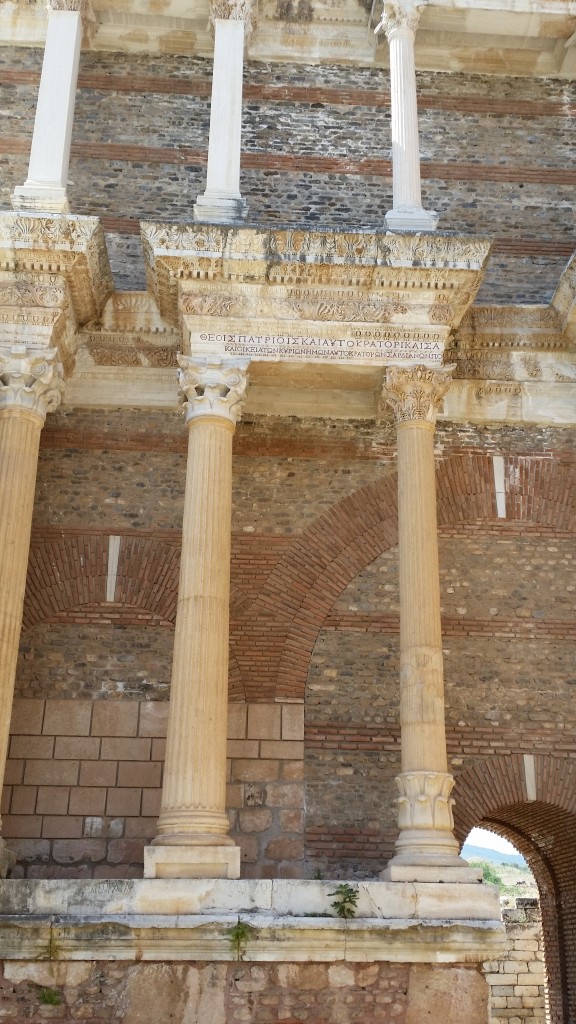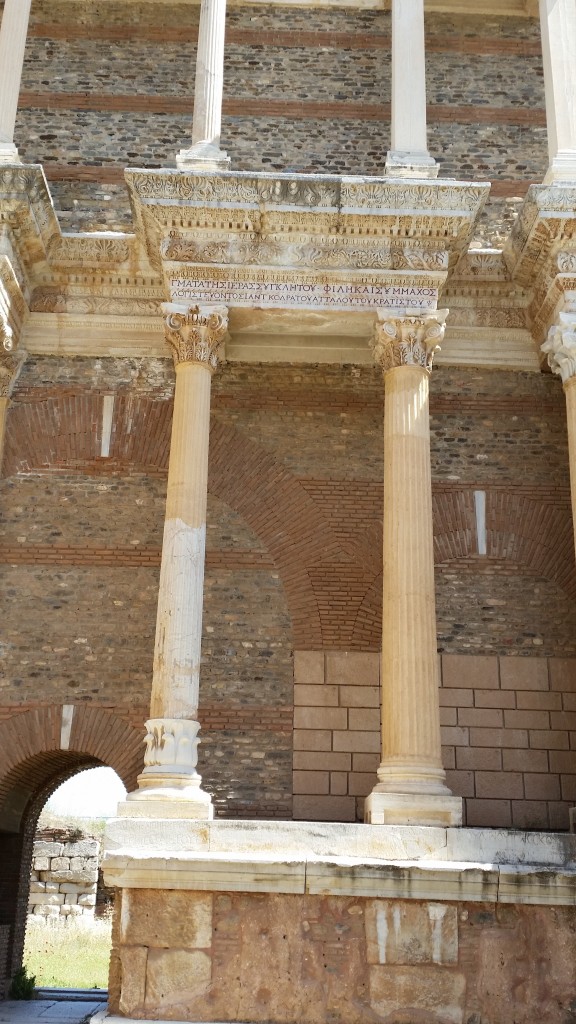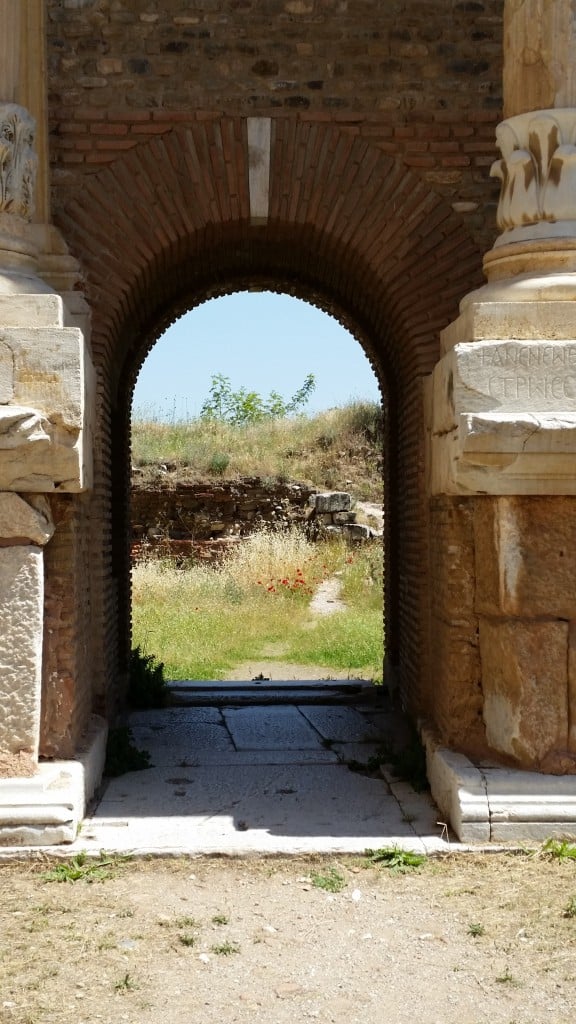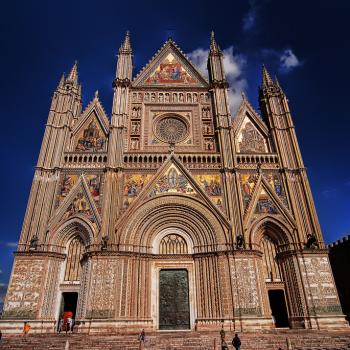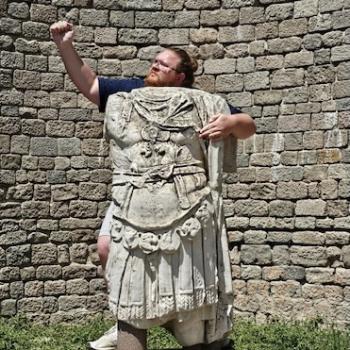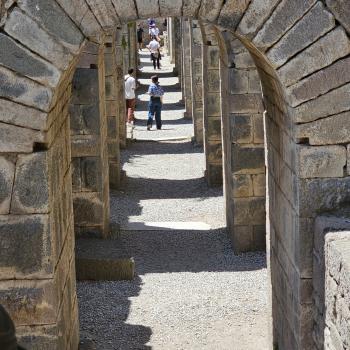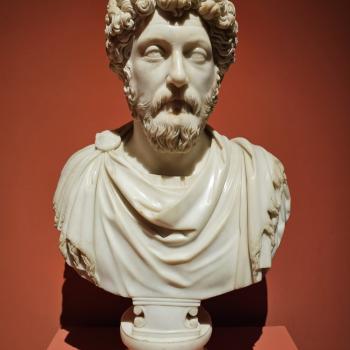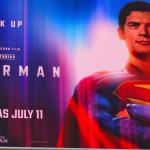The big three sites to go see among the seven churches of revelation are Ephesus, Pergamon, Sardis, to which one must now add a fourth, Laodicea, because of the amazing archaeological work done there in the last five years. In this blog post and the next we must focus on Sardis. We will look at the major part of this site first, which includes the shops, synagogue and gymnasium complex. In the next post we will focus on the Temple of Artemis, which is a half mile away.
Like most of these sites, from the 4th century on, they became Christian sites, and the Byzantine Christians reused the Greco-Roman resources ready to hand. Here is an excellent example of such repurposing— a Greco-Roman inscription is simply turned upside down and used to carve crosses on!
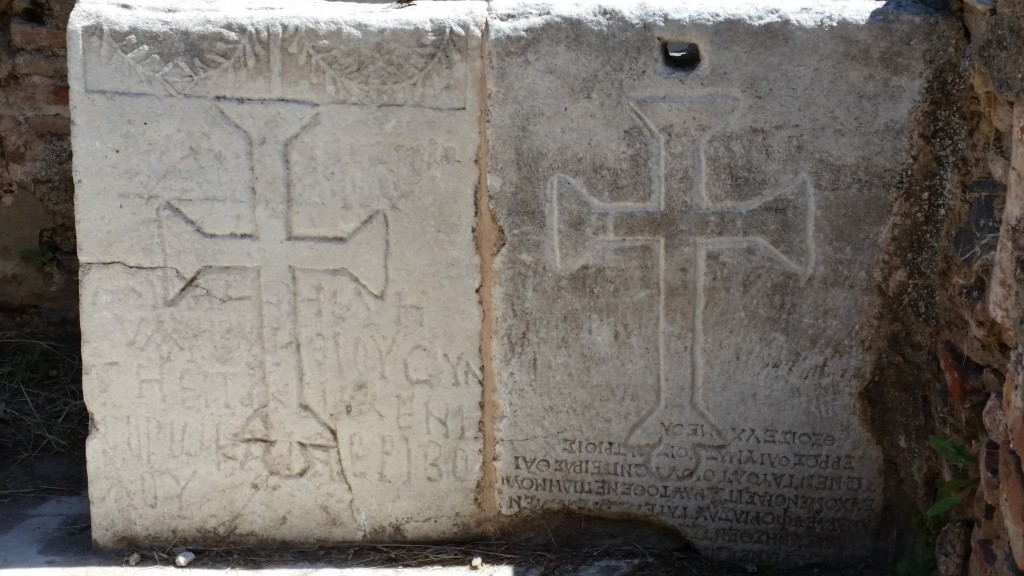
Along the main Roman road, a line of shops was built.
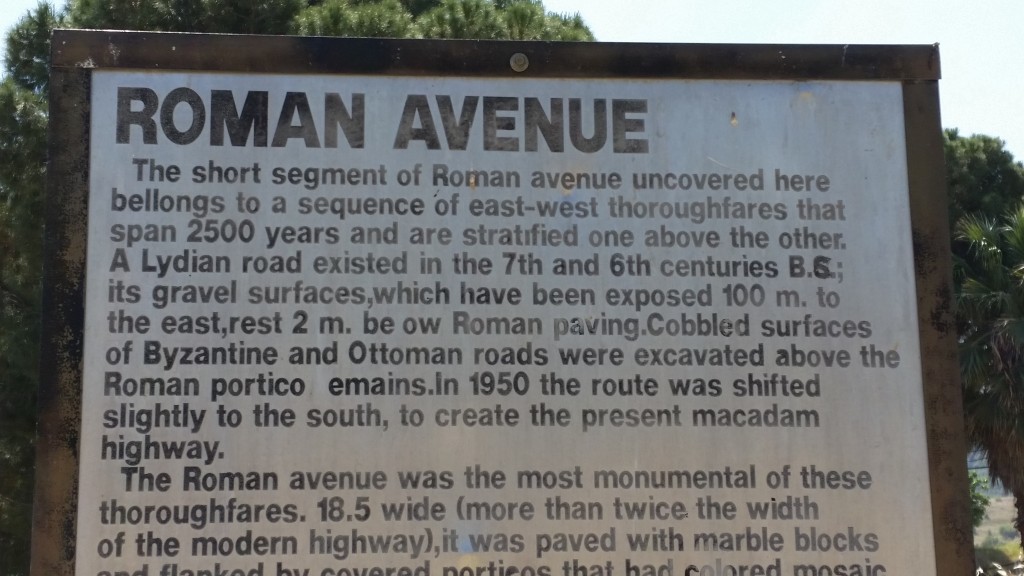
One of the first important shops across from the old agora that one sees is the shop of a Jew—
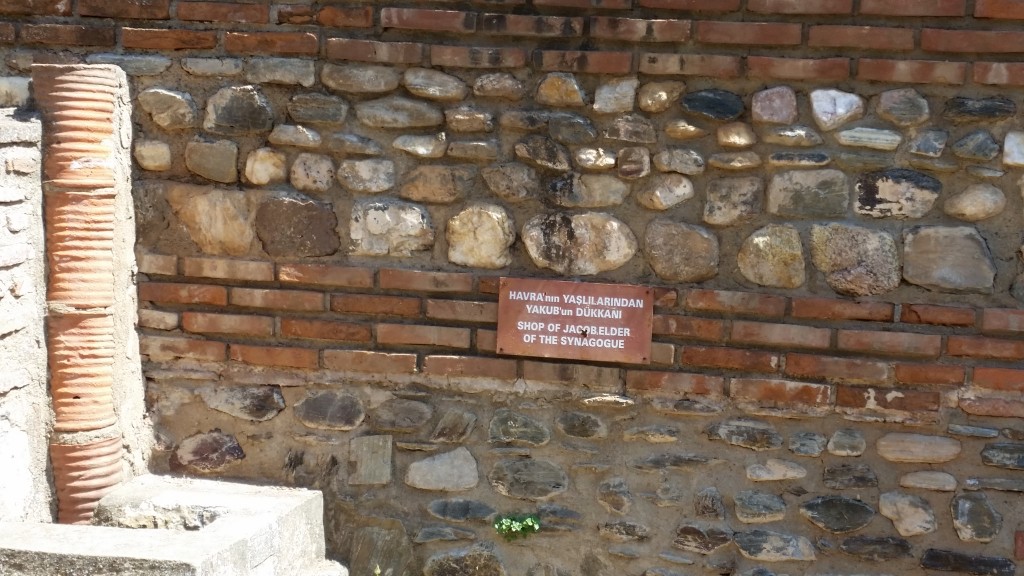
There is evidence of very wealthy Jews in this city, and if you are wondering how they got along well, most of the time, with their pagan neighbors, it is because these were very Hellenized Jews, Jews who did not have a problem with building an opulent synagogue right next to a gigantic Greco-Roman bath. Indeed, much of the design, and artisan work in the synagogue itself is Greek in character. Consider for example the mosaic floor, which unlike the one in Sepphoris, has no OT stories to tell.
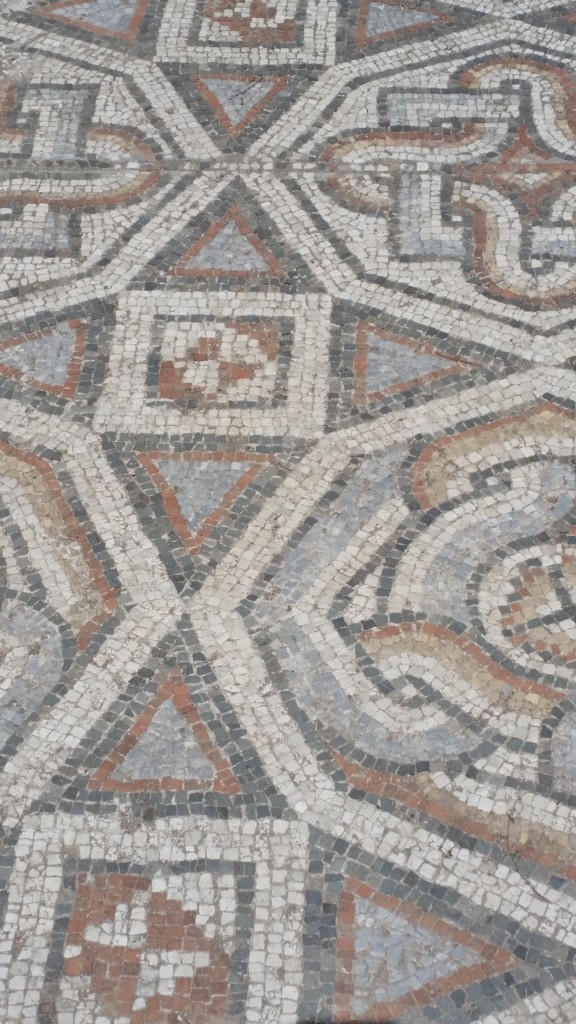
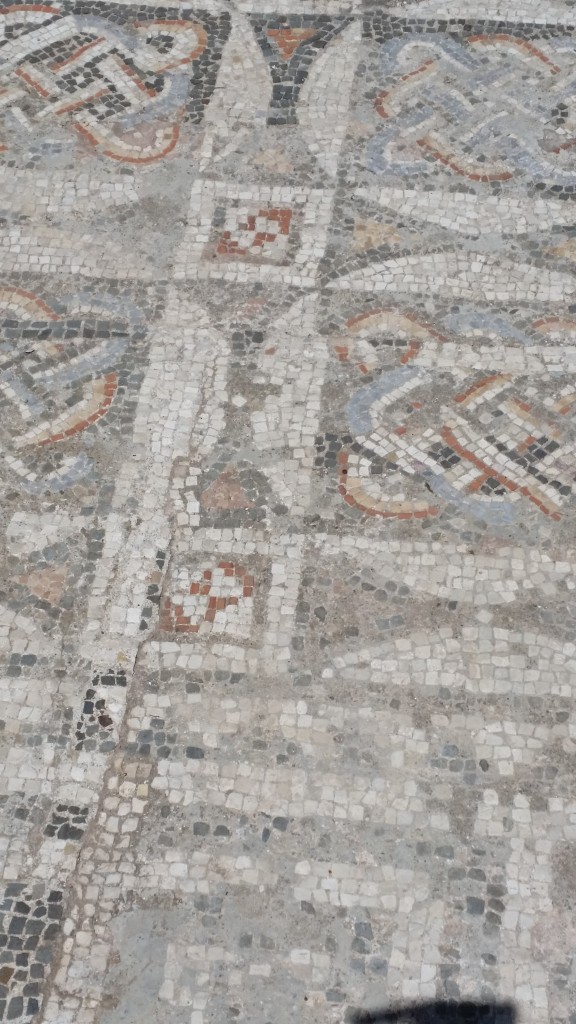
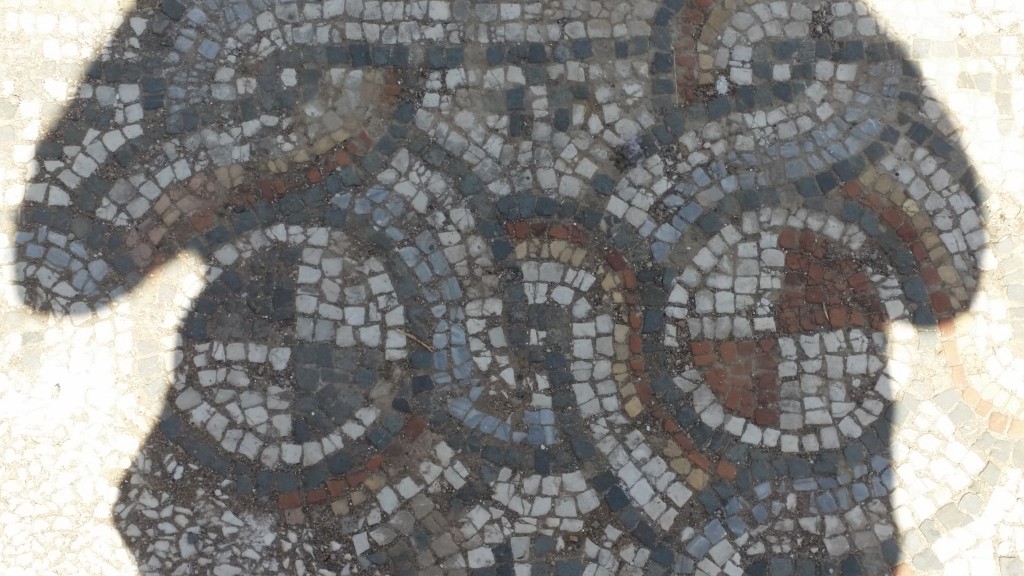
There were two rooms to this synagogue, an ante-chamber, and then the main worship hall. Here is a bit of a schematic to give you a picture of things.
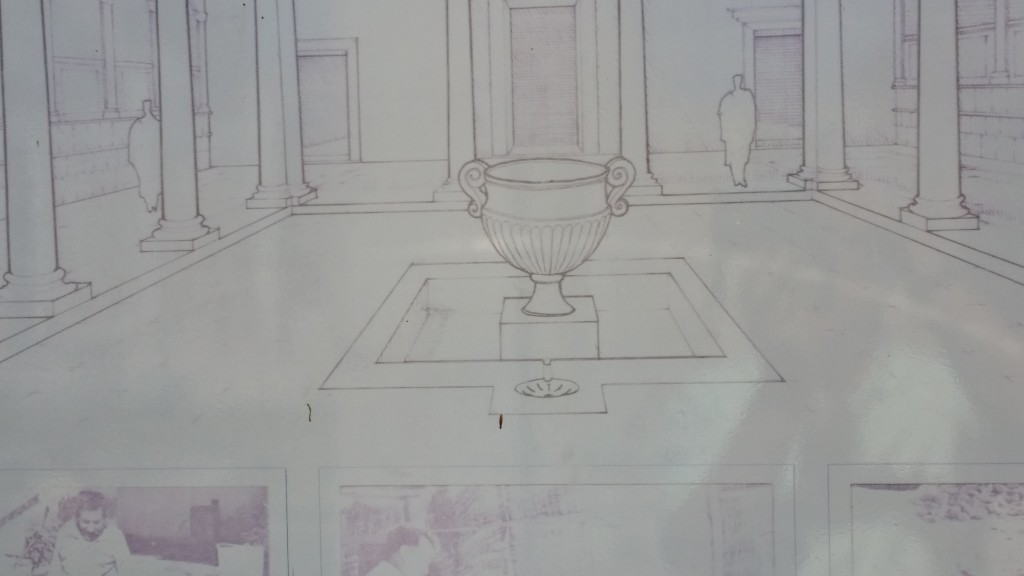
There are honorific inscriptions in the floor amongst the mosaics, indicating important persons and donors who helped build it no doubt. The impression you get is some Jews had done quite well here. This one honors a ‘theosebia’ a God-fearer who must have supported this synagogue….
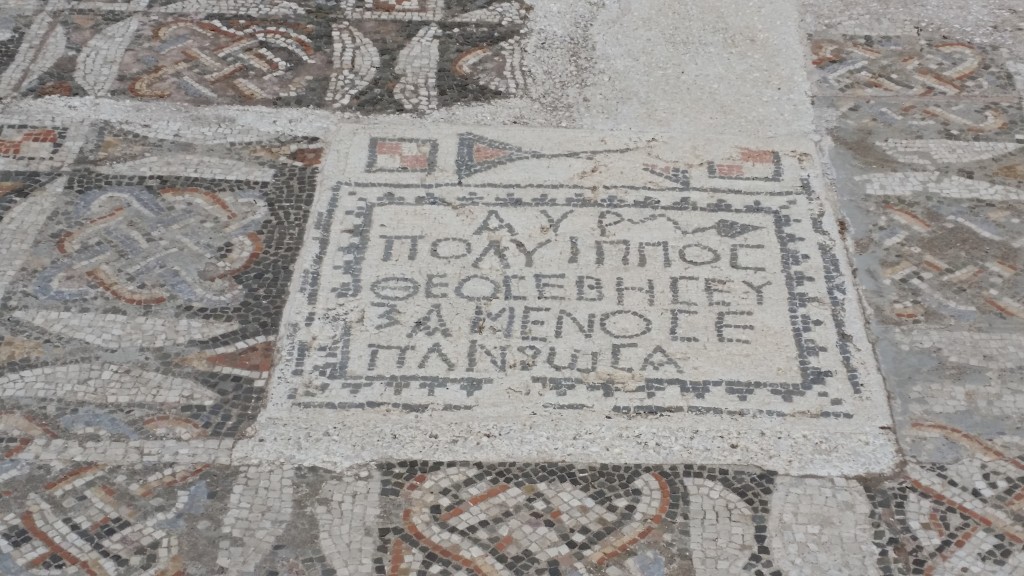
There are signs of indoor plumbing, as we would say,
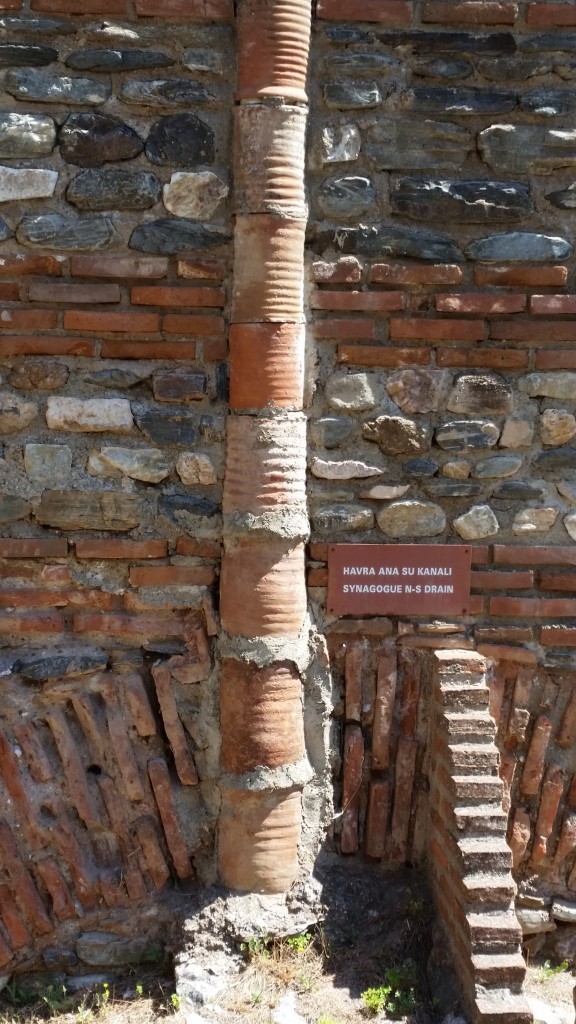
The walls had beautiful marble panels in them…
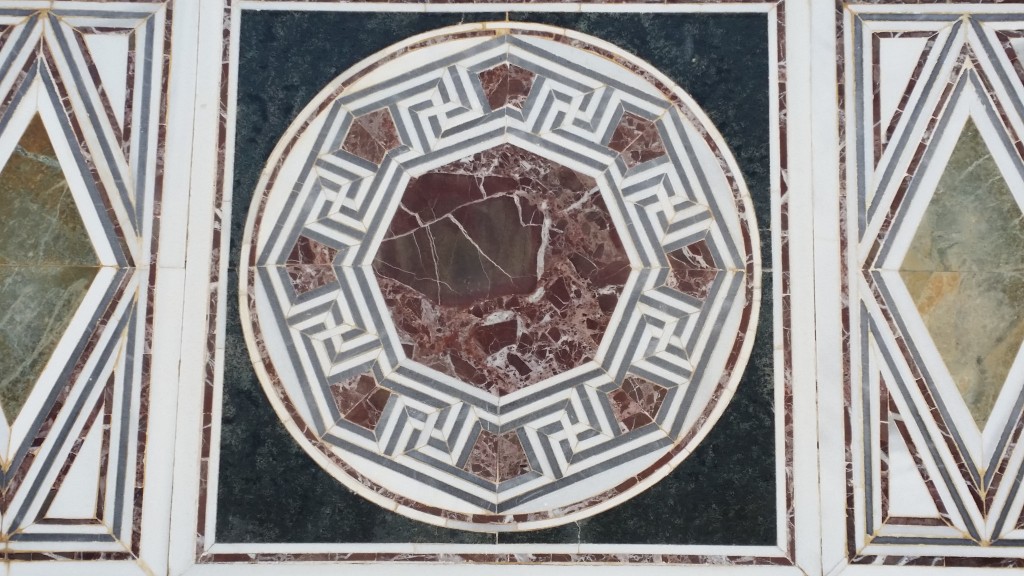
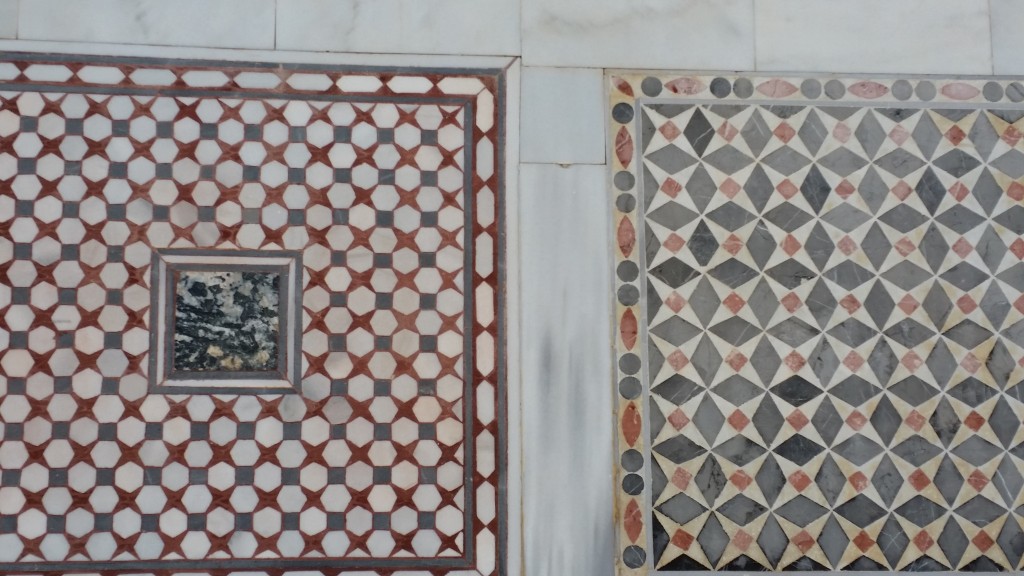
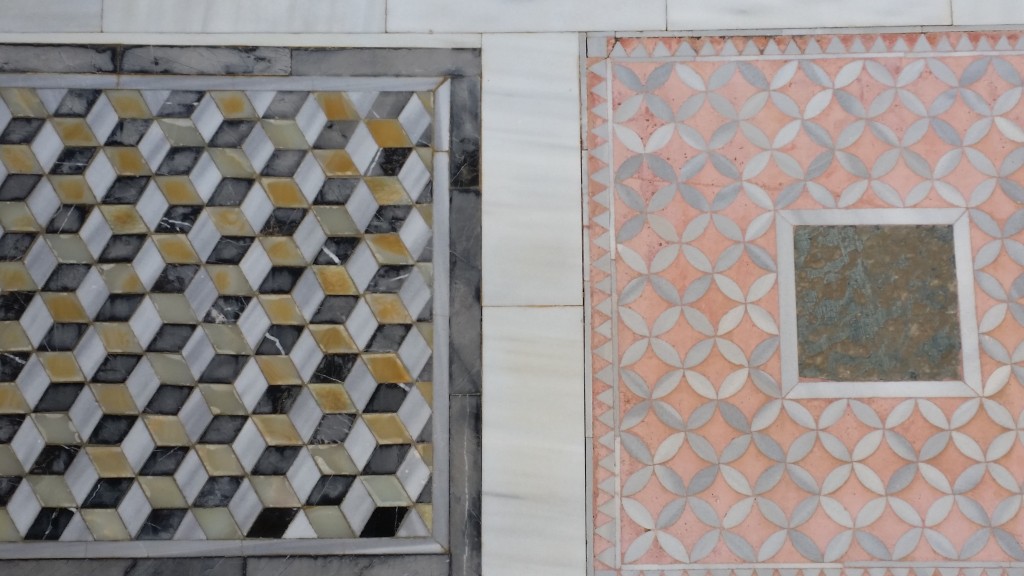
At one end of the main building were seats where the quorum could meet and discuss things, at the other end was a Torah cabinet. In between was a table to lay things on, and a krater (large vase for water). Here are pictures of these things, and a description of some of the things that went on in this synagogue.
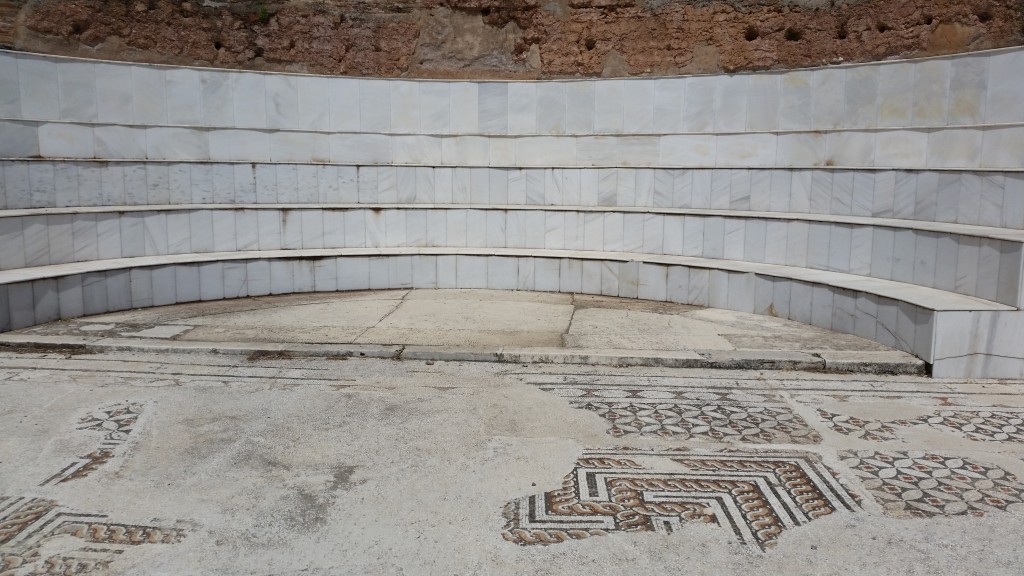
Here is a description of what went on in the forecourt, and a picture giving you some perspective from the forecourt into the synagogue proper.
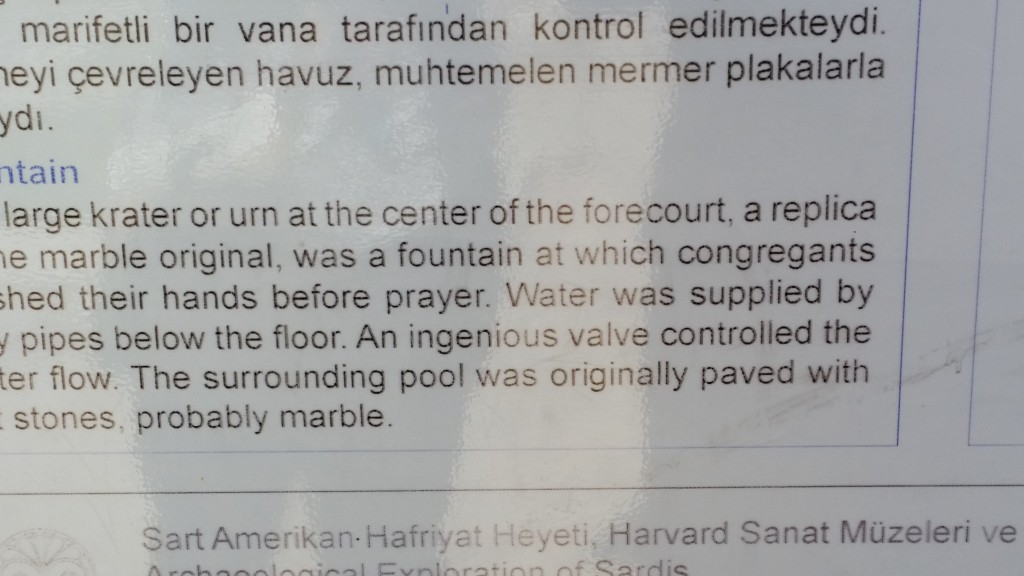
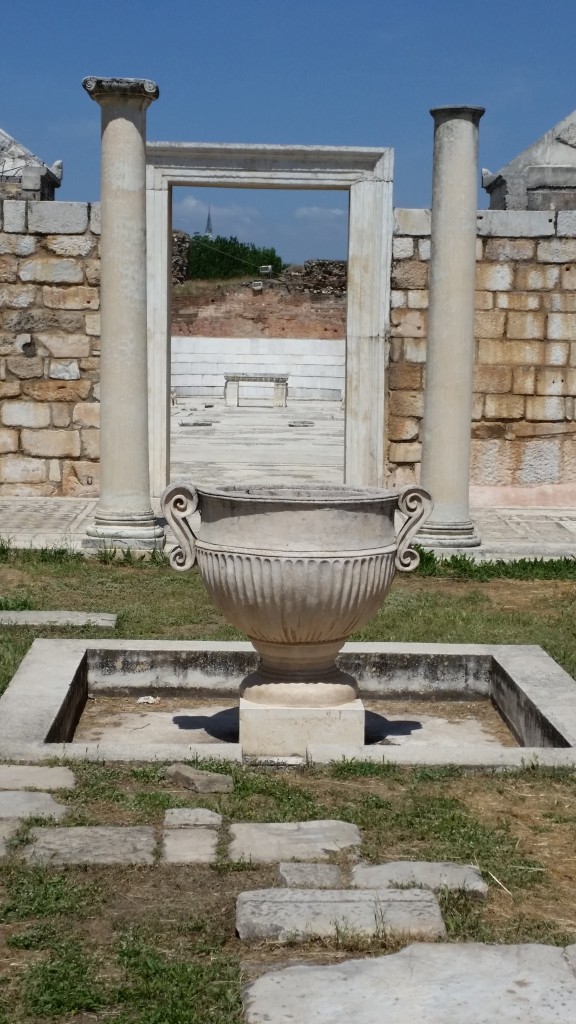
And yet another ‘theosebia’ inscription in the floor,
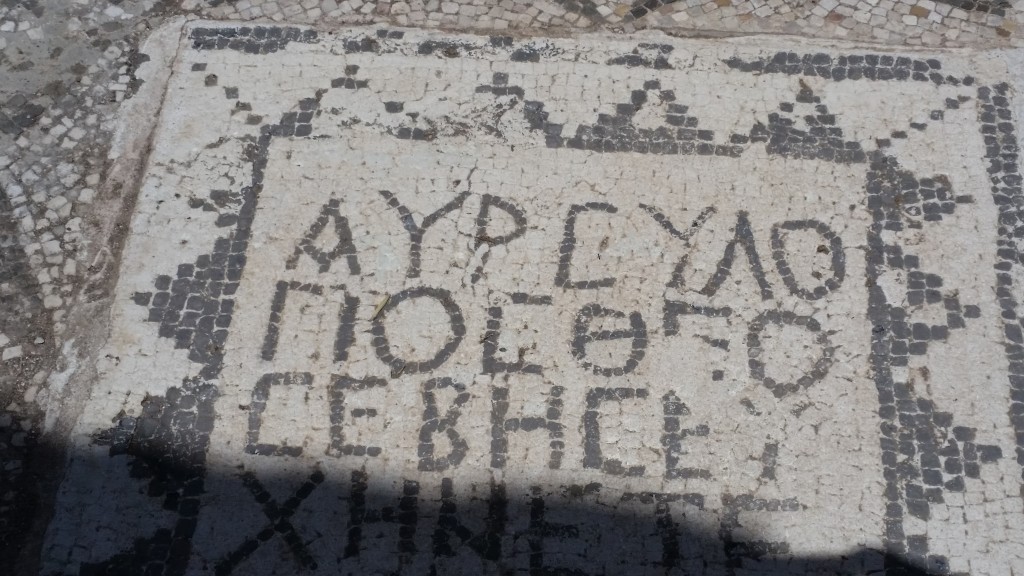
Once one walks outside the synagogue one is immediately confronted with this
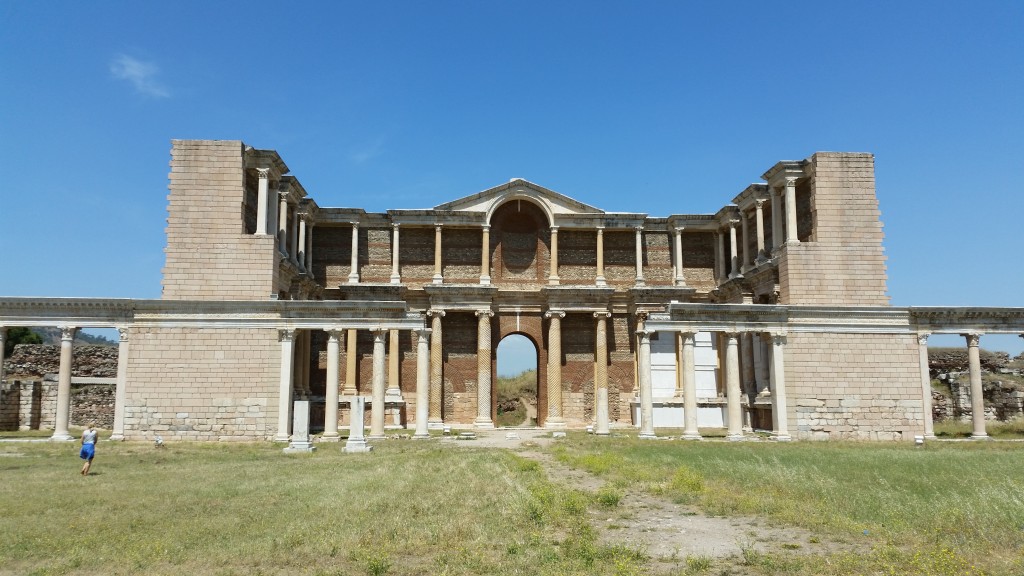
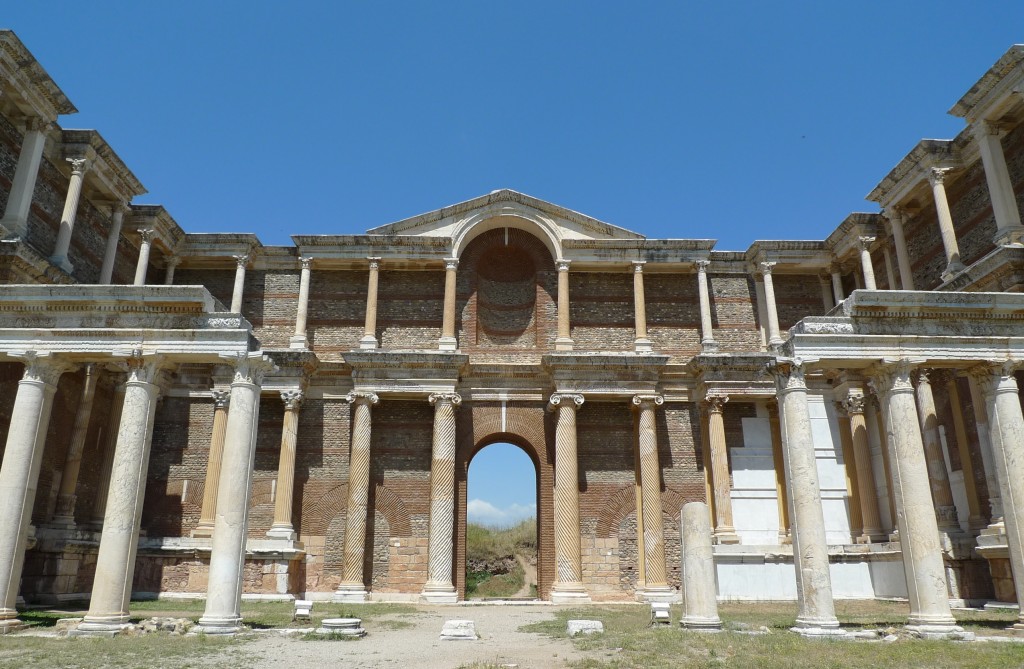
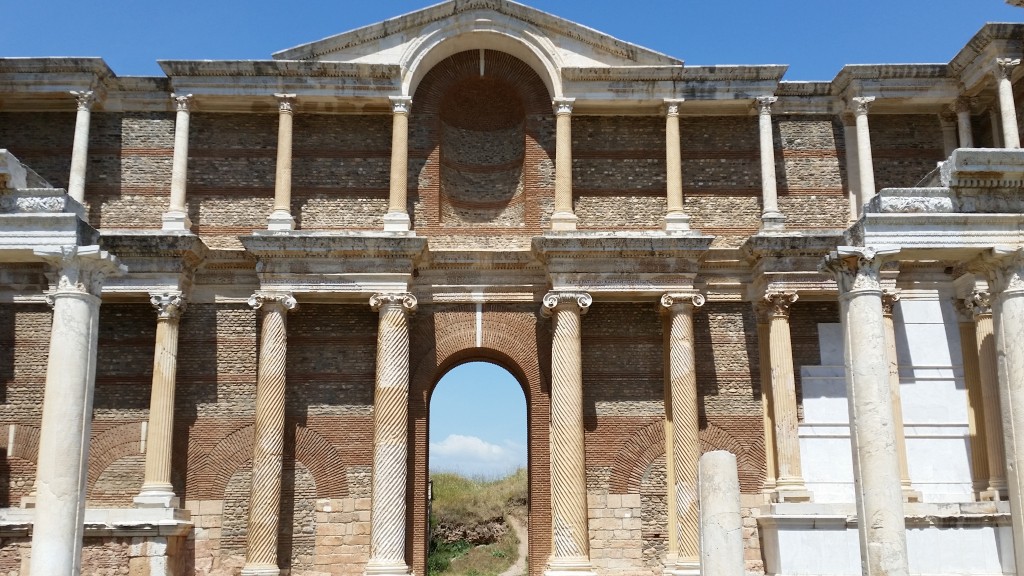
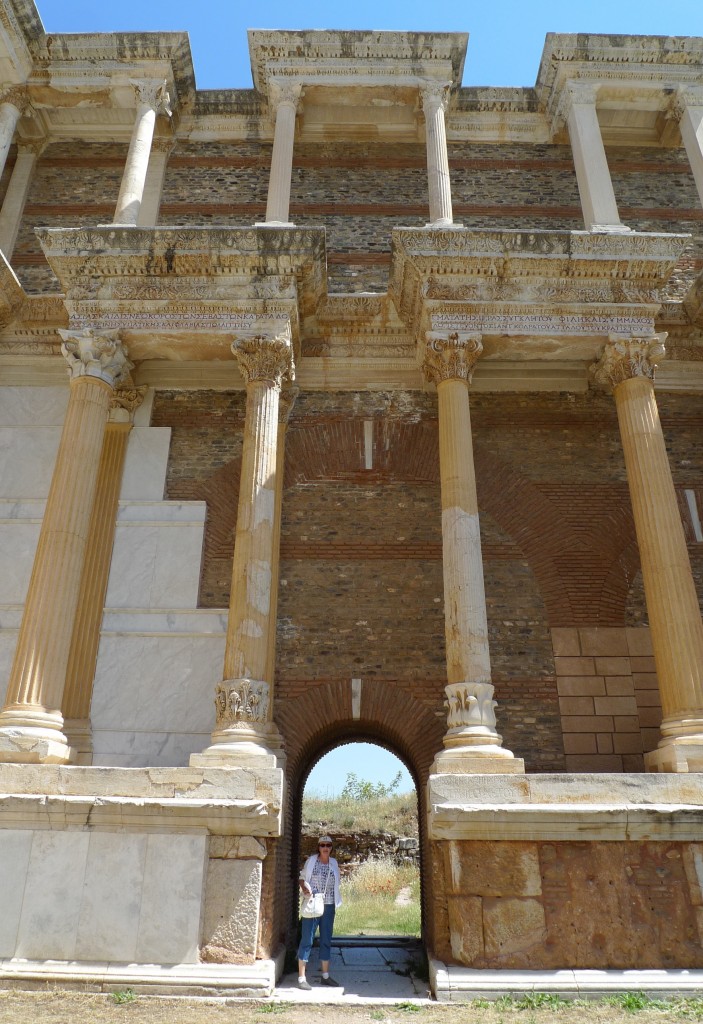
There is a considerable controversy about the reconstruction of this gymnasium, as there was a lot of reconstruction by the Harvard team. Not mere restoration, but reconstruction. It looks like, like the ancient Jews who were prepared to take the chance of locating themselves right next to the gymnasium/bath complex, and the source of pagan influence in general, the modern archaeologists in this case were prepared to roll the dice, and hope it turned out o.k. However you view, in antiquity this must have been one of the most awesome gymnasiums anywhere in the Mediterranean.
